As the crowd heaves at Singapore's popular Zouk nightclub, a Malaysian rapper in a crisp red-and-white tracksuit takes to the stage, working up the audience with shouts of "Come on, put your hands up!"
The phrase, almost a cliche in the cult of American hip-hop music, whips the crowd listening to Malaysian rap duo Too Phat into a frenzy.
The staccato beats and displays of urban ghetto fashion could place the scene in any of hundreds of US or European clubs.
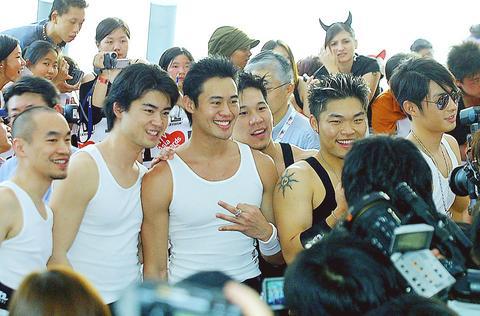
PHOTO: AFP
"Too Phat's really good but they need to be exposed more outside of Malaysia," gushed Anna Hazlett, a 19-year-old British student. "But I think they could be popular in the UK."
The increasingly global appeal and popularity of hip-hop could thrust Asian acts such as Too Phat before a wider audience, music industry executives say -- possibly even into the tough North American market.
EMI Group Plc signed Too Phat in 1998 -- through its "Positive Tone" label -- and Singapore hip-hop group "Urban Xchange" in February. Both could find appeal at home and abroad, said Caroline Qwek of EMI Music South East Asia.
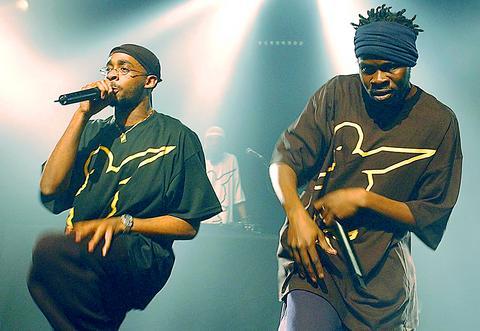
PHOTO: AFP
"Asian hip-hop music has come a long way and I think Too Phat certainly has the potential to do a lot more," said Qwek, an international marketing director.
In China, a new "Generation Y" has embraced hip-hop as an emblem of free-spirited expression while the sound has been a dominating influence in Tokyo sub-culture since the late 1980s.
Artists such as Taiwan's Machi and South Korea's Drunken Tiger also have strong local followings although their appeal is limited somewhat by lyrics written in their native language.
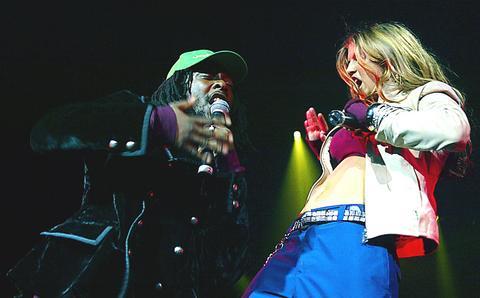
PHOTO: AP
But even Asian-language rap is being touted with some potential, experts say, citing the musical success of jazzy French rapper Claude M'barali, aka MC Solaar, whose fluid phrasing made up for a lack of English to generate strong US, British and Australian record sales in the mid-1990s.
"Sometimes people typecast Asian acts as merely mirroring what the West puts out.
"But I think through acts like Too Phat, Urban Xchange and Zircon, there are a lot of sounds that are slowly evolving to become very Asian-centric," said Qwek.
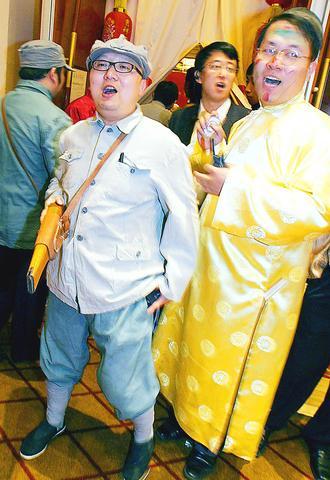
PHOTO: AFP
For now, Asian artists aspiring to see their names on US and European charts may want to focus on collaborations with Western artists, said Mishal Varma, vice president of programming and talent at MTV Networks Asia.
The recent MTV Asia awards held in Singapore saw pop singer Gareth Gates, winner of Favorite Male Artist, sing a duet with popular Malaysian singer Siti Nurhaliza, while Stacie Orrico performed Stuck with Urban Xchange and Too Phat.
"We intend to do much more of these collaborations ... because they come in as an underlying endorsement," said Varma, who also handles artist relations for the music network.
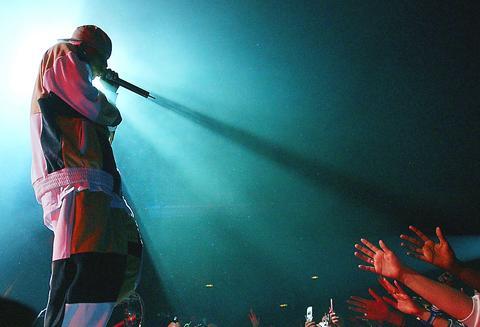
PHOTO: EPA
Too Phat have rapped since 1998, before hip-hop evolved into a multimillion-dollar industry in Asia. But not until their collaboration with international artist Warren G on a track in their third album, 360 degrees, did their popularity surge.
In the album, which went platinum in Indonesia and Malaysia, Too Phat raps about money, fame and love, sometimes incorporating Malay traditional music, or keroncong.
But widening their appeal outside Asia could be difficult.

PHOTO: REUTERS
"It's going to be really tough for them," said Spencer Ball, who has worked as a disc jockey in Singapore for five years.
"For Western MTV viewers to see Asian groups, even though the sound is right, it's a big paradigm shift. It will be hard. They don't look like the usual boy bands that dominate in the West."
Coming from Asia, many artists are also under pressure to differentiate their music from established Western acts such as 50 Cent and Grammy Award winner OutKast, especially given hip-hop's overwhelming association with American urban culture.
"I keep repeatedly telling Too Phat why don't you add some Asian sounds to it to make it sound a little different? It can still be hip-hop, but why not hip-hop with tablas or sitars in there?" says Varma, referring to two Indian instruments.
"Why do we have to be Asian and go onto the stage and go `Yo Yo Yo, what's up?'" he adds.
Varma points to the success of Panjabi MC, well-known for his tracks infused with drum-driven Bhangra folk music from Punjab, as a trailblazer for other Asian artists.
Panjabi MC won the joint award for UK act of the year at the Music of Black Origin (MOBO) awards in London last year. The MOBO awards celebrate the spectrum of music of black origin -- R&B, hip-hop, rap, jazz, reggae and gospel.
Another challenge is Asia's sheer diversity, from the Indian subcontinent to greater China, Japan and Southeast Asia. Different regions have their own languages, identities and musical styles, though hip-hop is proving remarkably universal.
Gary See, Singapore's managing director for Universal Music Pte Ltd, says the first step is to find success in Asia before going after a global audience.
"It's a long shot," adds See, who says Asian-based artists singing in English have yet to make a visible impact in the West. "They basically have to create a wave in Asia first in big markets like Japan, Korea and Taiwan before they can make inroads into America or Europe."
But Too Phat is confident its hip-hop style can find wider appeal. "There are no guidelines or rules in hip-hop," says group member Joe Flizzow. "It's really all about representing where you're from. We're from Malaysia and we are proud of that."

May 11 to May 18 The original Taichung Railway Station was long thought to have been completely razed. Opening on May 15, 1905, the one-story wooden structure soon outgrew its purpose and was replaced in 1917 by a grandiose, Western-style station. During construction on the third-generation station in 2017, workers discovered the service pit for the original station’s locomotive depot. A year later, a small wooden building on site was determined by historians to be the first stationmaster’s office, built around 1908. With these findings, the Taichung Railway Station Cultural Park now boasts that it has

Wooden houses wedged between concrete, crumbling brick facades with roofs gaping to the sky, and tiled art deco buildings down narrow alleyways: Taichung Central District’s (中區) aging architecture reveals both the allure and reality of the old downtown. From Indigenous settlement to capital under Qing Dynasty rule through to Japanese colonization, Taichung’s Central District holds a long and layered history. The bygone beauty of its streets once earned it the nickname “Little Kyoto.” Since the late eighties, however, the shifting of economic and government centers westward signaled a gradual decline in the area’s evolving fortunes. With the regeneration of the once

The latest Formosa poll released at the end of last month shows confidence in President William Lai (賴清德) plunged 8.1 percent, while satisfaction with the Lai administration fared worse with a drop of 8.5 percent. Those lacking confidence in Lai jumped by 6 percent and dissatisfaction in his administration spiked up 6.7 percent. Confidence in Lai is still strong at 48.6 percent, compared to 43 percent lacking confidence — but this is his worst result overall since he took office. For the first time, dissatisfaction with his administration surpassed satisfaction, 47.3 to 47.1 percent. Though statistically a tie, for most

In February of this year the Taipei Times reported on the visit of Lienchiang County Commissioner Wang Chung-ming (王忠銘) of the Chinese Nationalist Party (KMT) and a delegation to a lantern festival in Fuzhou’s Mawei District in Fujian Province. “Today, Mawei and Matsu jointly marked the lantern festival,” Wang was quoted as saying, adding that both sides “being of one people,” is a cause for joy. Wang was passing around a common claim of officials of the People’s Republic of China (PRC) and the PRC’s allies and supporters in Taiwan — KMT and the Taiwan People’s Party — and elsewhere: Taiwan and